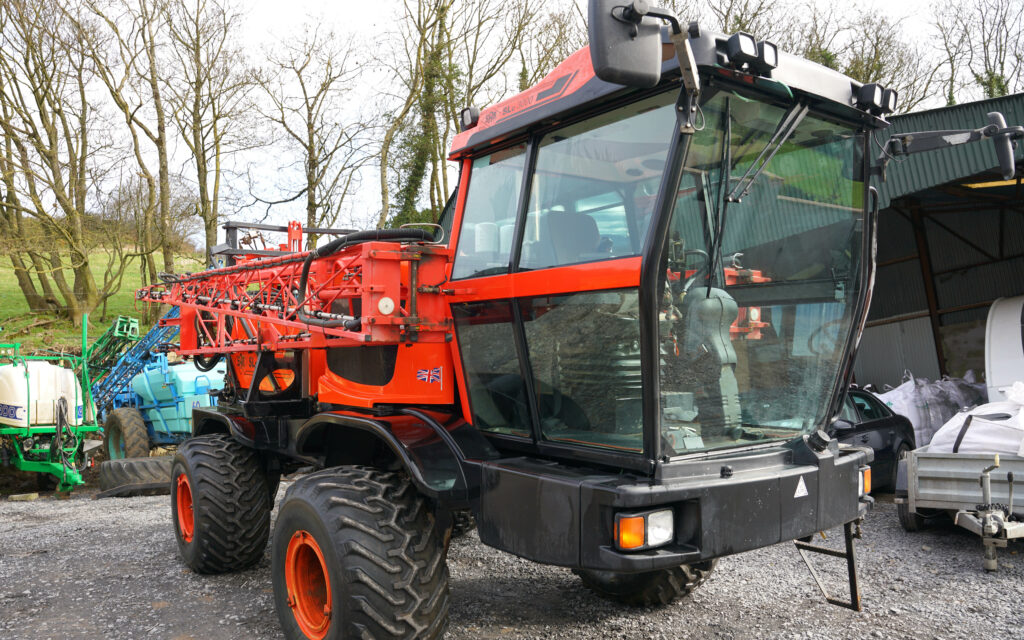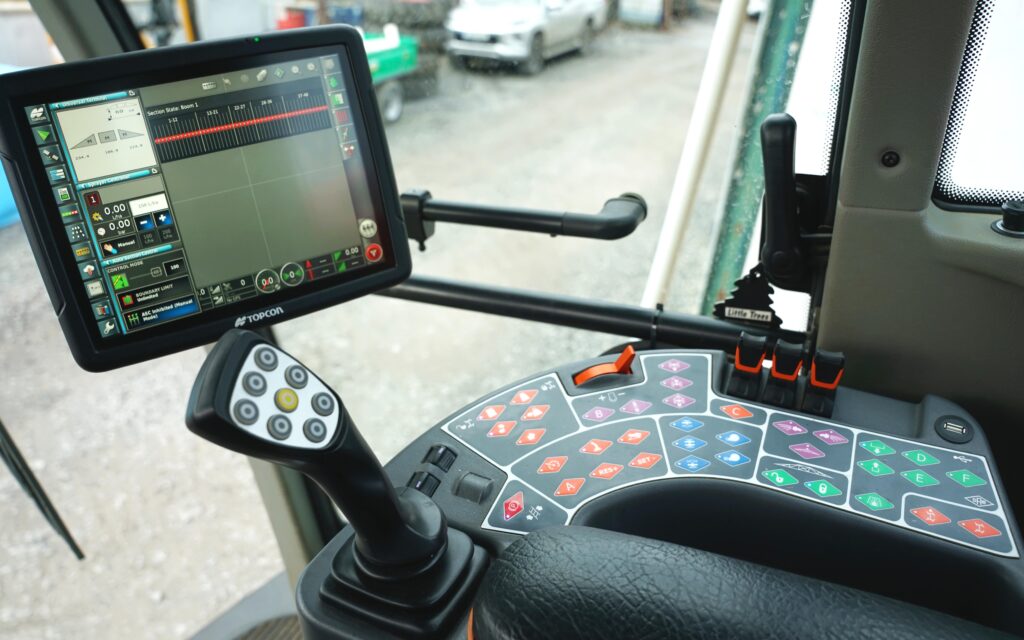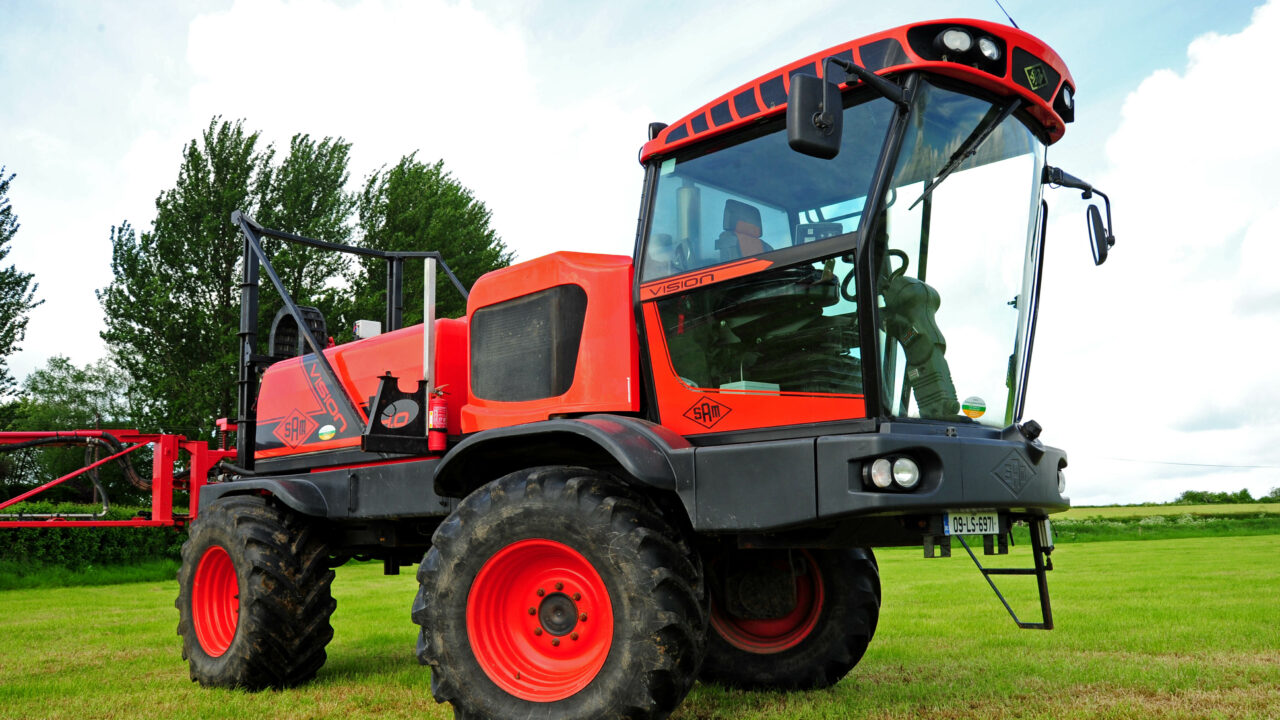Any sort of self-propelled implement is likely to be regarded as being restricted to the larger farmer or specialist contractor, as running another vehicle is bound to incur extra costs.
This was the situation with grassland farms and forage harvesters for many years, but as secondhand machines became available they found their way onto dairy units which wished to continue doing the work themselves.
A new role for self-propelled sprayers
A similar process is now underway with sprayers as farmers come to realise the benefits of having a dedicated machine that is designed specifically to do the one job, although that role is expanding with the increasing use of liquid fertiliser.
This is not to be dismissed too lightly as Noel Furlong, of Furlong Equipment Services Ltd. in Co Laois, explains, pointing out that fertiliser application by sprayer has probably increased fourfold over the last couple of years – and is still expanding rapidly.

Bringing the precision of chemical spraying to fertiliser is one advantage of switching over, but does it need to be done by a self-propelled machine, and if so, at what point is it worth moving up?
Noel has distinct ideas about this, the first of which is to move away from the decision being entirely dependent on acreage, and to start to considering the time savings and gains in efficiency that a dedicated machine brings.
Keeping it level
A major consideration is that it is always ready to go spraying, rather than having to waste time swapping tractors about between implements – a time-consuming job, especially when spraying windows don’t stay open for ever.
A second is stability, especially when compared to trailed machines. A self-propelled unit is a far more stable platform thanks to its all-round independent suspension.

Having this feature will hold the boom a good deal steadier in the field, circumnavigating the need for a complex parallelogram mounting arrangement, which can wear rapidly, leading to further boom movement.
A low ground pressure is another plus. There is only the one set of wheels passing across the field, and the weight is evenly balanced between the two-drive axles.

This comes into its own on soft ground where powered wheels tend to cause less damage to the soil surface than ones being dragged through the mud.
Proper cab filtration is also essential when spraying and here there is little doubt that a well-designed pressurised cab with a full and proper filtration system is important to those spending long hours applying pesticides.
Financial considerations
Despite these advantages the decision will eventually come down to cost, and this need not be as frightening as at first might be thought.
With regards to how much a customer will need to invest, Noel cites, purely as an example, the cost of a 2011 machine with a 4,000L tank and a 24m boom as being around €90,000.
Not only will it be fully serviced and ready to go, but the package would include a full satellite guidance system, eight-section control and two sets of wheels.
This compares favourably with the price of a high-spec trailed sprayer, but it comes with none of the complications of a sophisticated boom mount or the initial depreciation, nor does it need a large tractor to tow it.
Used and new
Furlong Farm Equipment has been importing used SAM Sprayers from the UK since 2016 and has recently started selling new units as well, with four already ordered throughout Ireland.

Noel carries a genuine enthusiasm for the brand, and having brought in many machines since he added them to the Clayden Drill range, for which the company are also the Irish agents, he has had very few, if any, problems – even with those boasting ten years of service or more.
Noel notes that because of the corrosive nature of chemicals the machines are usually cleaned regularly and being from the UK, they tend to be well kept, often parked inside when not being used.
Tender care
SAM Sprayers are keen to remove the electricals as far from the booms as possible, so all the spray line valves are controlled by compressed air with the valve actuation taking place at the front of the machine

Engine wise they are all fitted with a Deutz diesel which he considers bulletproof. It is a six-cylinder 240hp unit running at 1500rpm, which is where the maximum torque lies, ensuring that they are running well within their design parameters.

Presently, the most popular width is 24m, but there is a growing interest in 30m units with several already having gone through the yard.
It is possible to fit section control down to the individual nozzle yet that is an expensive option, so most customers settle for a 2m section (four nozzles) which is a fraction of the cost and is sufficiently accurate for most tillage purposes.
Wider window
Yet the decision as to whether to trade up to a self-propelled sprayer should not just depend on the price divided by the acreage, the calculation is not that simple, and there are a growing number of variables to be taken into account.
As already mentioned, the ability to apply fertiliser is a bonus especially as section control with a sprayer is far more precise when applying nutrients in liquid form, decidedly so in windy conditions.

Cropping patterns are also changing, beans and other non-cereal crops are becoming more widely grown, stretching the spraying season over almost the entire year.
With a longer spraying season there comes a lot more chopping and changing between implements unless a single tractor – which, realistically needs to be of 150hp or more – is dedicated to the job.

A large and reliable tractor permanently attached to trailed sprayer is as great a financial commitment as a good used sprayer, making the case for the latter even more persuasive.
A blank sheet
For those who are convinced and are all set to go the whole hog, Furlong Farm Equipment will also happily supply a new SAM sprayer, and it is already doing so, although there is a 12-month lead time at present.
When buying new the eventual price will depend entirely on the specification and there are such a multitude of options that the company no longer lists a ‘standard’ machine. Instead, it offers a plain unit which can then be dressed up to the customer’s requirements and budget.

The latest model is the Infinity which lies at the top of the range and these sprayers enjoy a CVT, four-wheel steering options, self-levelling suspension and whatever guidance system the customer prefers.
Prices will compare to a medium-sized combine, yet, unlike a combine, it will be in use the year round and can take on at least two roles.
Moving on to a self-propelled sprayer may take a shift in thinking towards viewing the machine as a central part of a farming operation, rather than just something that lies at the periphery, yet Noel is convinced that their presence on Irish farms is only set to grow.
